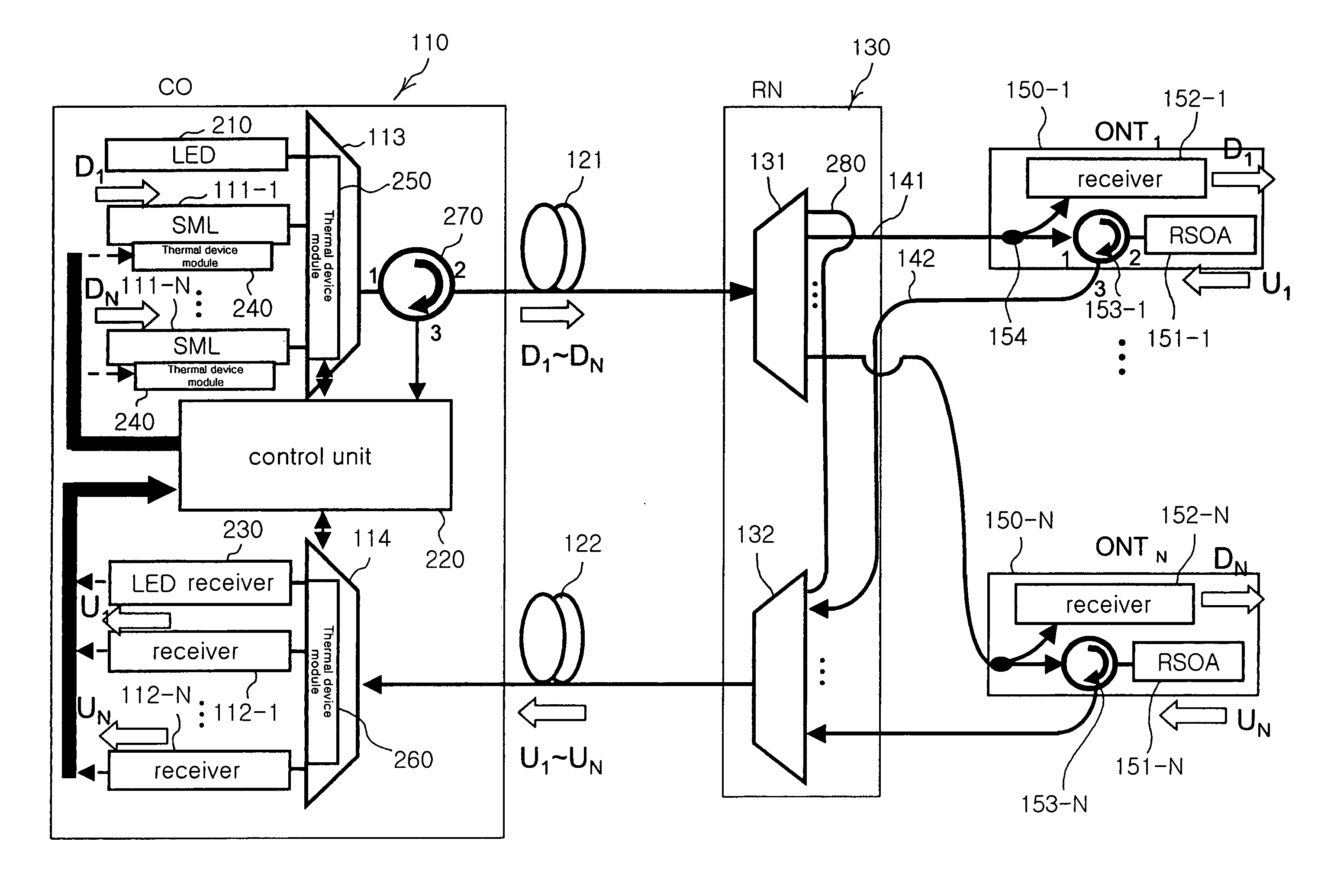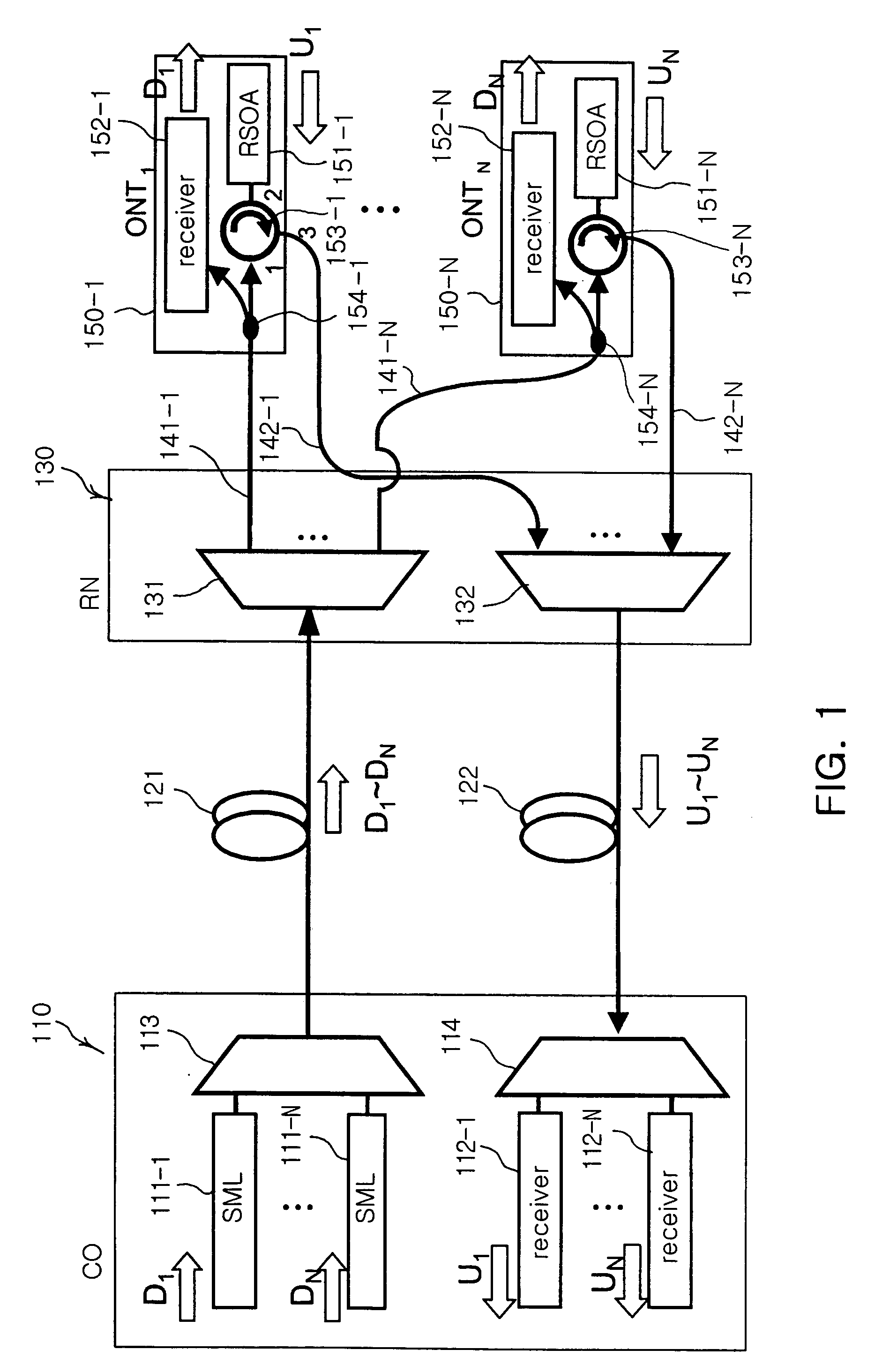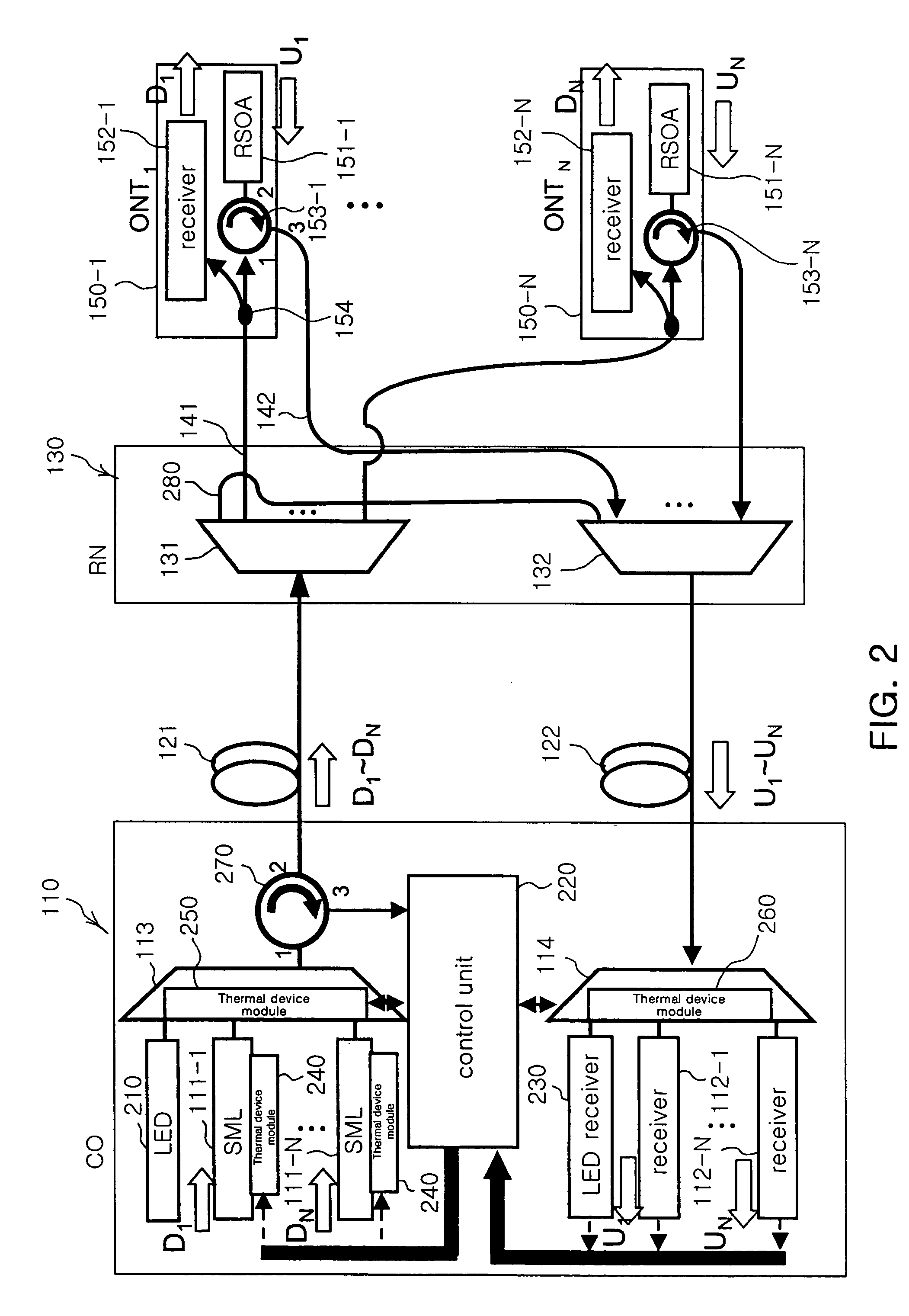Loop-back wavelength division multiplexing passive optical network
a passive optical network and wavelength division technology, applied in the field of passive optical networks, can solve the problems of difficulty in implementation, limitation of providing a quality-guaranteed bandwidth of more than 100 mb/s to subscribers, and expected difficulty in ensuring sufficient bandwidth of dsl and cmts technologies, and achieve the effect of easy determination
- Summary
- Abstract
- Description
- Claims
- Application Information
AI Technical Summary
Benefits of technology
Problems solved by technology
Method used
Image
Examples
first embodiment
[0043]FIG. 1 is a diagram illustrating the configuration of a loop-back WDM-PON according to the present invention.
[0044] Referring to FIG. 1, an RSOA-based loop-back WDM-PON system according to the first embodiment of the present invention includes a central office (CO) 110, downstream and upstream optical fibers 121 and 122, a remote node (RN) 130, downstream signal optical fibers 141-1 to 141-N, upstream signal optical fibers 142-1 to 142-N, and optical network terminals (ONTs) 150-1 to 150-N.
[0045] The central office 110 includes central office light sources 111-1 to 111-N, central office receivers 112-1 to 112-N, a central office optical multiplexer 113, and a central office optical demultiplexer 114. For example, Single Mode Laser diodes (SMLDs), such as Distributed Feedback Laser Diodes (DFB-LDs), may be used as the central office light sources 111-1 to 111-N, and are constructed separately or in an integrated array form. The single mode laser diodes modulate electrical sign...
PUM
 Login to View More
Login to View More Abstract
Description
Claims
Application Information
 Login to View More
Login to View More - R&D
- Intellectual Property
- Life Sciences
- Materials
- Tech Scout
- Unparalleled Data Quality
- Higher Quality Content
- 60% Fewer Hallucinations
Browse by: Latest US Patents, China's latest patents, Technical Efficacy Thesaurus, Application Domain, Technology Topic, Popular Technical Reports.
© 2025 PatSnap. All rights reserved.Legal|Privacy policy|Modern Slavery Act Transparency Statement|Sitemap|About US| Contact US: help@patsnap.com



